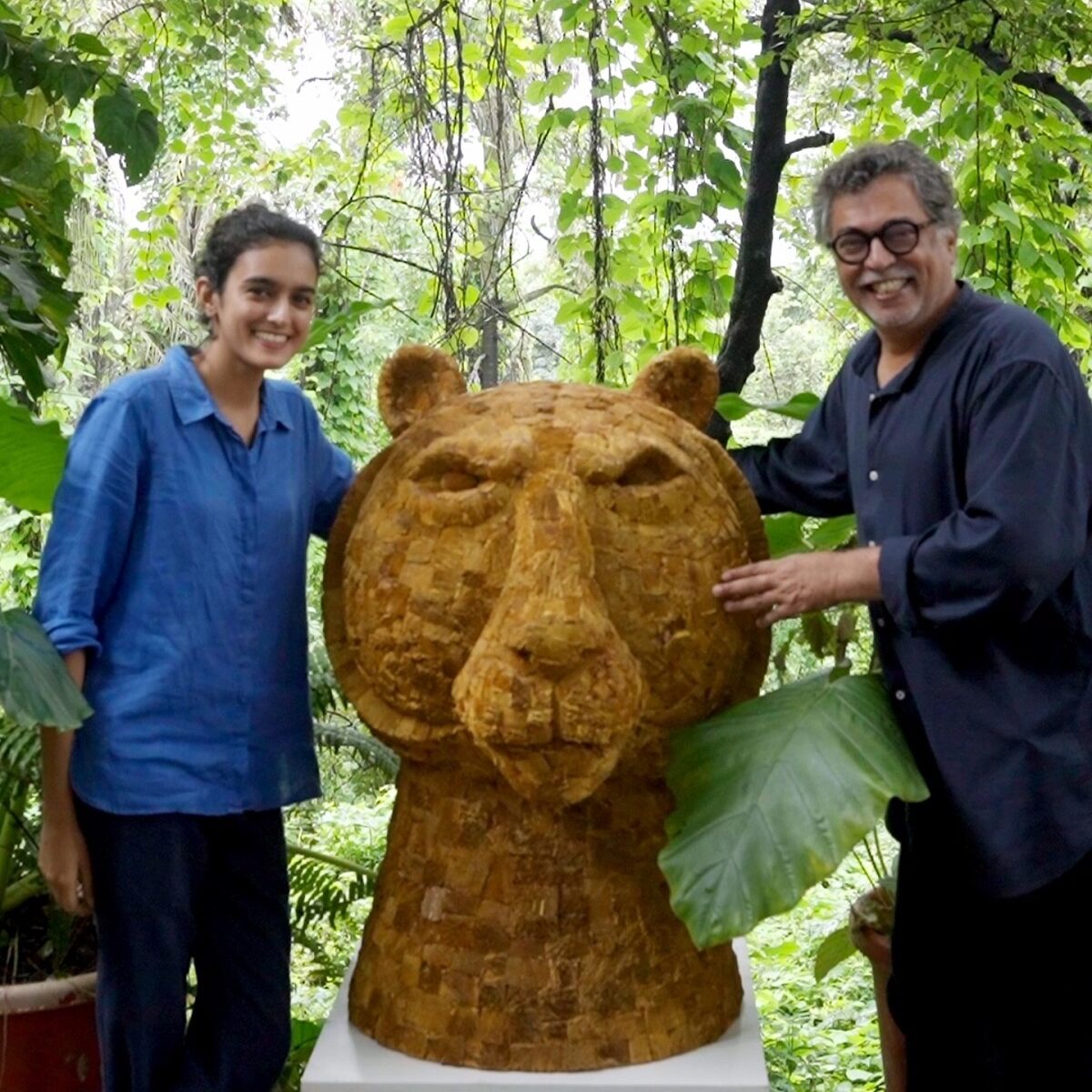Panaji, August 2023- From repeated sightings in the Mhadei wildlife sanctuary to much quoted references in a recent landmark High Court judgement, the Royal Bengal Tiger has now found a place in a piece of Goan contemporary art.
Renowned artist Dr. Subodh Kerkar recently unveiled the intricately crafted tiger head at the Museum of Goa (MOG) in Pilerne, through a sculpture made from wild, organic mushrooms, as his ode to the mighty tiger to underline the importance of the apex predator to the forests and environment of Goa.
Conservationist Heta Pandit and historian-activist Prajal Sakhardande underline the importance of art in the space of conservation and activism, especially when it comes to popular messaging and documentation of reality.
“My friend, Sanquelim-based artist Navso Parwar sent me some dried mushrooms for use in my artwork. The texture of the mushrooms reminded me of tiger fur; thus, I was inspired to make a tiger sculpture. Discussions now taking place regarding the tiger reserve in Goa have had an impact on this choice. I finished the task in one month,” says Kerkar.

The unveiling of the sculpture comes at a time when Goa has been debating over the setting up of a tiger reserve at the Mhadei Wildlife Sanctuary in the context of the recent Bombay High Court order and the state government’s reluctance to notify the reserve in the state, citing limitations.
Kerkar states that art itself serves an important function as an “expression of time”.
“So whatever happens in the environment, whatever happens during the lifetime of the artist, the artist has to respond to it. Whether it is politics of the forest or the politics of defection or corruption. All social events should find a reflection in the work of art. Only then could the artist be considered as a true artist,” Kerkar said.
His words find resonance in comments made by noted heritage conservationist Heta Pandit, who says that art can also be a step towards creating awareness and understanding.
“Art is a soft medium that is often overlooked but is a powerful force in activism. Subodh has done a perfect combination with the fragile world of our wild mushrooms and the tigers in the Mhadei region. Both these elements are an integral part of our ecosystem, our culture and our environment and both are essential to our survival,” says Pandit, who is also an independent researcher and an author of 11 books on Goan heritage.
Historian and activist Prajal Sakhardande also states that the tiger is an integral part of Goan culture.
“Historically, tigers have been depicted through sculptural art in Goa. I have seen sculptures of tigers in Shigao, Maxem and many villages of Goa. There are many cave temples in Goa dedicated to tigers. Leveraging art is a beautiful medium to convey any societal message,” Sakhardande said.


